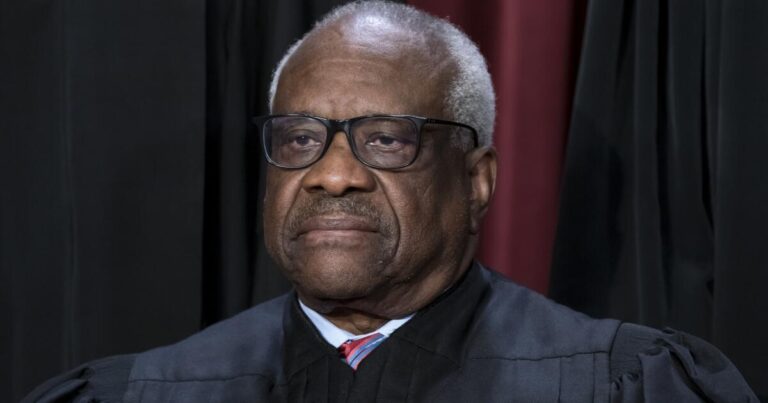Whereas it’s welcome and overdue that the Supreme Court docket lastly adopted a code of ethics for its judges on Monday, the method is significantly flawed because it accommodates no enforcement mechanism. As a substitute, it continues to go away it as much as every choose to determine whether or not to dismiss it in a specific case.
Till Monday, each choose within the nation — state and federal — was certain by a code of ethics, apart from a very powerful jurists: the justices of the US Supreme Court docket. Latest revelations of significant moral lapses by a number of judgessignificantly Clarence Thomas and Samuel Alito, highlighted this absence.
The court docket has its lowest public approval rankings in historical past, and whereas there are actually many causes for this, the absence of a code of ethics has actually contributed to the lack of legitimacy. This was a self-inflicted wound. There was no purpose why the judges couldn’t undertake the identical code of ethics that each one different judges have been required to observe.
And on Monday, the Supreme Court docket lastly set the identical bar for its members. With little fanfare, it issued a “Code of Conduct for Justices of the Supreme Court docket of the US,” signed by all 9 justices. This was accompanied by a short assertion from the court docket explains that the absence of a code “lately has led to a false impression that the judges of this court docket, in contrast to all different jurists on this nation, think about themselves unfettered by any code of ethics.” The court docket mentioned that to “dispel this misunderstanding, we situation this Code.”
The code itself is imperceptible. It’s based mostly on American Bar Affiliation’s Mannequin Code of Judicial Conduct, which is used all through the nation. In construction and content material it’s largely the identical. Certainly, all that’s outstanding is how lengthy the court docket delayed taking this simple and apparent step—and the way a lot stress was required earlier than the court docket relented.
However there’s a essential drawback with what was launched on Monday. It continues to defer to every particular person choose as as to if she or he ought to be disqualified from listening to a specific case. There is no such thing as a indication of any change on this disturbing follow.
A court docket commentary accompanying the brand new code even underscores the harms when a choose says no, as a result of no different choose can take the place of the absent member. However this falsely assumes that having 9 justices is extra essential than avoiding a bench tainted by moral improprieties.
There are already many instances the place the court docket capabilities with out all 9 judges, resembling when one is ailing or when there’s a emptiness that has not been crammed. After Justice Antonin Scalia died in February 2016, there have been solely eight justices for the following 15 months as a result of Senate’s refusal to contemplate President Obama’s nomination of Merrick Garland. Having eight judges will not be splendid due to the hazard of ties and leaving points unresolved. However avoiding moral clouds is extra essential.
Nobody ought to be a choose over himself. There have to be a mechanism for deciding when a lawsuit ought to be dismissed that doesn’t go away it totally as much as the person. The documented moral decline of latest years actually offers grounds for questioning whether or not the courts are sufficiently delicate to those points.
There are a lot of totally different approaches to this that might work. My colleague Jeremy Fogel, a former federal choose, instructed to the Senate Judiciary Committee in Could that the chief justice appoint three retired federal appeals court docket judges to rule on recusal points. There are a lot of glorious retired judges who might be appointed to carry out this perform. An alternate could be to have recusal points earlier than a court docket determined by the opposite eight justices. The hazard with this method is that the judges might develop a norm of deferring to one another and refusing to meaningfully implement the code of conduct.
No matter how it’s structured, there have to be an enforcement mechanism for the code of ethics to be significant. “Belief us” is rarely an satisfactory reply, particularly in relation to moral points. The legitimacy of the court docket and the rule of regulation itself require the court docket to take the following step and supply a strategy to implement the foundations it has adopted.
Erwin Chemerinsky is a contributing author for Opinion and dean of the UC Berkeley Faculty of Regulation. His newest ebook is “Worse than nothing: The Harmful Fallacy of Originalism.”

